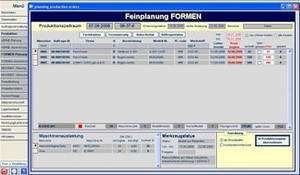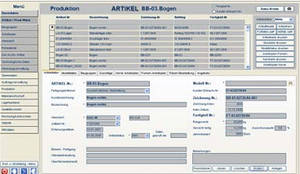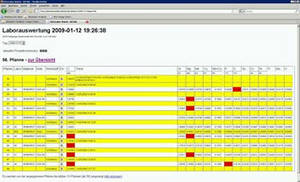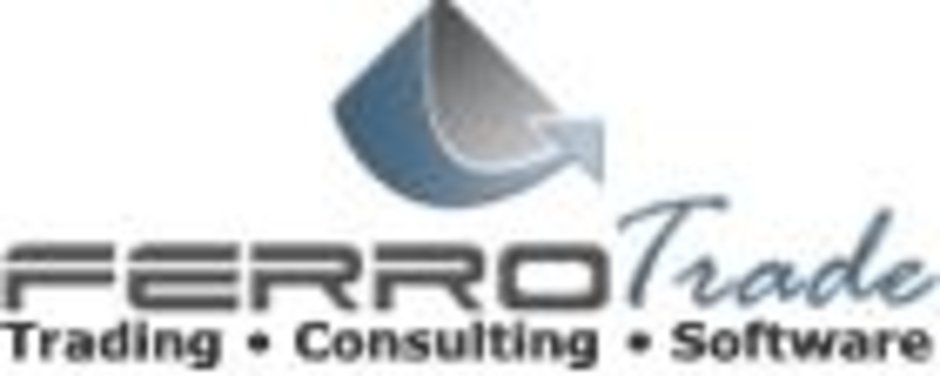A new buzzword is being talked about: "Real Time Companies". The effects under discussion include: responding to customer demands or operational anomalies in real time, meeting delivery deadlines, optimizing production processes and the deployment of materials, monitoring energy consumption, or optimizing warehouse inventories. Correspondingly, the primary goal of "real time" is that data for making decisions becomes available in a timely manner, meaning immediately after it becomes known. At the same time, most companies have recognized that strategies oriented towards conditions are an important lever for adjusting to increasing productivity and accessibility.
For many companies, the discussions of real time may appear to be merely the return of a fashionably cute marketing strategy in search of sales arguments for the products of the IT industry. In reality, however, this is a systematic necessity for the economic effectiveness of a company in this continuously accelerating age. Consequently, the current strategic tasks of corporate management lie in the development and introduction of new, software-based technologies and organizational procedures for the optimization of all operational processes.
To an increasing extent, a modern company is an information-processing system. For which reason, the internal IT processes in particular should be involved in the streamlining process. Thereby, modern management is the shared usage of the central data, once it is available.
The objectives of the FerroTrade Company start here, and together with their partners, they have developed technological solutions for foundries since 2004. The important commercial and technological data are displayed, evaluated, and integrated into the landscape of the IT system. In doing so, a continuous flow of information ensures the vertical integration of data all along the value chain.
Modern IT solutions using cost-transparent technologies (including Open Source components) generate: sustainable increases in production, improvements in the quality of the finished product, and efficient information transferal across all production departments, while reducing costs at the same time.
In doing so, four issues should be considered by the companies when streamlining:
- Enterprise Resource Planning (ERP) and Production Planning Software (PPS) Systems for controlling the Production and Organizational Processes
- Acquisition of Operational Data and Management of the Energy and Technological Processes
- Documentation and Conception of Processes
- Investment in the replacement of control elements with more affordable IT solutions
ERP and PPS Systems for Production Management
The increasing pressure to reduce costs in the industry has risen continuously over the last few years, and to an increasing extent, the product value is now determined by the amount of service. More often, the selection criterion for the customer is the attractiveness of the products where quality, delivery reliability, delivery times, service, supply or technological prominence are concerned.
ERP or PPS systems consist of complex software components that support the resource planning of a company and have the following well-established definition for the production management goals:
expense-optimized preparation of products of the desired quality in defined amounts at the pre-determined deadlines.
There are three goals, namely: optimization of expenses, observance of deadlines and assurance of quality; whereby the pre-determined deadline still has priority, however, is no longer valued as the only measure of production control quality. The intention to manufacture products more in line with the market through the reduction of the cycle time, meaning shorter delivery times or starting production later, and to provide the necessary flexibility in order to react cost-effectively to constantly changing demands stands in contrast to the goal of meeting deadlines.
The primary goal of a PPS system correspondingly is in the planning and management of in-house production and external services, and includes a outlook calculation of the production process, in order to guard against ill conceived, improvident and irrational events, thereby using the values established through past experience for determining the technological production sequence.
 Planning with outlook calculation for the start of production |
One of the primary goals of PPS systems is the improved production capacity load factor. Thereby, the user receives an overview of the shop operations that are currently being executed by the workstation under consideration, and can make adjustments if capacity is still available, either by delaying deadlines or producing stockpiles for other orders at this workstation.
ERP or PPS systems serve as "real time" information centers for the marketing, production and shipping departments, and often also for the customers.
FoundPlan is a production planning system, which has been inspired by this concept. Through its modular construction, and correspondingly the specific demands of a foundry. Components can be added for additional processes from the molding shop through the forming equipment, the pouring into a pressure die cast, or for centrifugal casting with management of sequence numbers.
At the same time, the PPS system can be extended all the way to the mechanical processing of cast parts and can represent all technological and operational planning processes for a complex foundry operation. However, due to its clearly laid out modular structure, the SMALL version may also be very effectively deployed in smaller foundries.
A special language module enables the FoundPlan PPS to assimilate other languages very quickly.
Only by means of computer-supported assessment of all production data can appropriate decisions be reached in the event of production fluctuations and anomalies, and thereby have an immediate effect on the internal and external expenses.
FoundPlan was introduced at the Harzer Werke Motorentechnik in Blankenburg for the manufacture of cylinder sleeves for diesel motors using centrifugal casting and has produced concretely calculable improvements since then. According to statements by the managing director, Mr. Wittkowski, the delivery deadline reliability, which started at 73%, has increased to 91%, which is a significant improvement in customer satisfaction and has had a positive impact on the assessment of suppliers. The company sales could be increased by roughly 17% during this period, where one must admit that an increase in sales is not possible without demand. Prior to the introduction of the PPS system, however, the capacity limits had already been reached, particularly in the mechanical processing area. Through FoundPlan, organizational and planning weaknesses were discovered and the fact that the available capacity is now being used more effectively can be recognized from the sales developments. The order status and management reports provide just-in-time information about the processing status of the respective order and the fulfillment of the plan specifications, so that adjustments can be made for fluctuations in the production process. The third generation of FoundPlan is currently being implemented at Harzer Werke Motorentechnik.
Many of the weaknesses in production companies result from observable shortcomings in the flow of information. The causes for this lie in insufficient perception or conception of interdepartmental order management. A PPS system supports the planning, administration and conception of the flow of work from sales to shipping following a horizontal integration path, and increases the transparency of order processing. At the same time, objective support for decisions is made available for the resolution of conflicts of interest between the various specialist departments.
The essential foundation of a PPS system is the management of data, covering information that is both order independent (independent of deadline) and contract dependent (dependent upon deadline). The data created, stored and maintained within information management includes the item and model information, raw material management, parts lists, task schedules, production facility management, planning information management, order management, customer and supplier data, delivery notes and invoices.
In addition to the primary goals, the usage of PPS systems provides a number of additional advantages, which are clarified by the secondary goals, which do not lie within the responsibility of production management and, unfortunately, are often not recognized as advantages of PPS systems. The most interesting secondary goals are:
- Improvement in quality through the continuous integration of article and model information, parts lists and work schedules
- Documentation of the expert knowledge, which can be made available to everyone. Specialist knowledge, which is independent of the personnel
- Confident and complete preparation of materials in all production areas through the usage of parts lists, and the reduction of downtime due to the absence of materials along with that
- Confident calculation and control of costs
- Simplified creation of the shipping documents
- Better capacity usage through compliance between demand planning and actual outlays
- Reduction of the production costs through consistent information about the production methods and improved control of production from the viewpoint of expenses
 The article screen with all technological data |
FoundPlan is planning software, which covers all of the demands of a foundry operation providing seven deployment options with its standard modules. It distinguishes itself by adjusting to the organizational and technological idiosyncrasies of any company. Documentation and Conception of Processes
The documentation of all available data is one important task for IT systems, organizing it into relationships and presenting it in an understandable manner. In addition, external data sources may also be integrated into the system, such as: video monitoring images, documents and peripheral systems.
The data is displayed "live" and may be reviewed anywhere thanks to web technology, and, if necessary, may be transferred to any possible terminal device including mobile phones. Likewise, this data is available to other systems and software (database gateways or ODBC and web services).
On the basis of the data volume obtained, limitations and rules can be defined for quality management control, analysis and supervision, and both the production procedure and the terminal are monitored continuously, both quantitatively and qualitatively.
In this manner, production flaws and bottlenecks are quickly recognized and may be eliminated before the customer or later production steps report the discovery of the defect, which significantly reduces the costs of quality assurance and reworking measures. The user responsible for production receives an overview by means of the continuous assessment of what is being produced and how. The corresponding values are displayed in order to get a more graphic representation than just the pure numbers.
Here, FerroTrade offers a number of proven solutions in cooperation with their partners; and they are specially predestined for the solution of typical foundry problems.
Management of the Energy and Technological Processes.
The solutions in the field of automation have been implemented locally, centrally controlled and cross-linked among themselves. Thus, data from across the entire production cycle can be optimally incorporated into the daily production schedule in order to use energy effectively, to ensure the quality of the material or to stabilize the reliability of machines and facilities. Modern algorithms from information processing and computer science, such as neural networks and genetic algorithms, thereby support the production process and quality assurance through optimal control action, and so create the basis for savings in raw materials and energy resources. The finished products remain competitive not only due to the increased quality and significantly fewer returns for flaws, but also in every case by reason of the expense situation.
 Visualization and trend calculation of the analysis values of the spectometer |
Practical examples provide testimony about the economical effect of such control elements, such as a computer-supported control system that was deployed at the Gussfertigungs Ges.mbH in Vienna for monitoring the energy consumption and quality of the melting process. A coke-less cupola furnace with an induction collector is metallurgically monitored by a control element in combination with a spectrometer and its energy consumption optimized. The potentials in this case lay in quality assurance, reduction of material rejections and energy savings, as well as amortization, of not even a single year.
Investment in the Replacement of Control
Equipment For most machines and equipment, the primary source of replacement costs arise from the control components, such as stand-alone power supply controls. In this field in particular, license-free open source software has proven itself with modules for production automation and management, and an increasing number of globally active companies are retrofitting their systems to be based on such systems, in order to reduce their investment and operating costs.
The system components from FerroTrade have been developed on the basis of such license-free components and guarantee independence from technology and manufacturer. They provide better performance and stability using the same hardware.
Thereby, even older machines and equipment can be slowly migrated to a new generation of devices, whereby expensive recabling is avoided, the systems are on-line significantly more quickly and are once again available less expensively.
In conclusion: a real time company is not a marketing strategy; the way there is increasingly becoming an economic necessity to an increasing extent in a market, which operates globally.
Ulrich Wackernagel
Click here for further Information and Contact to FerroTrade in our Suppliers Profile


